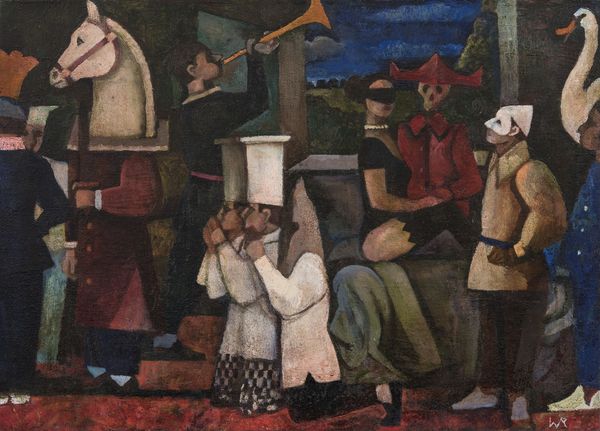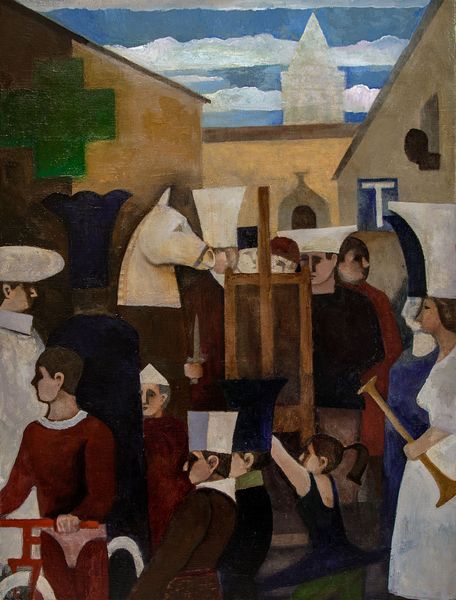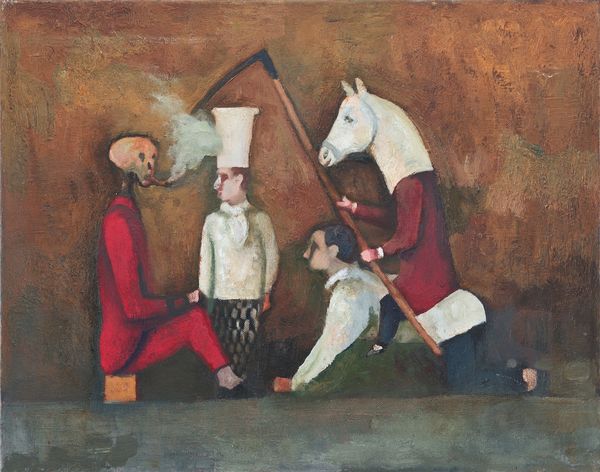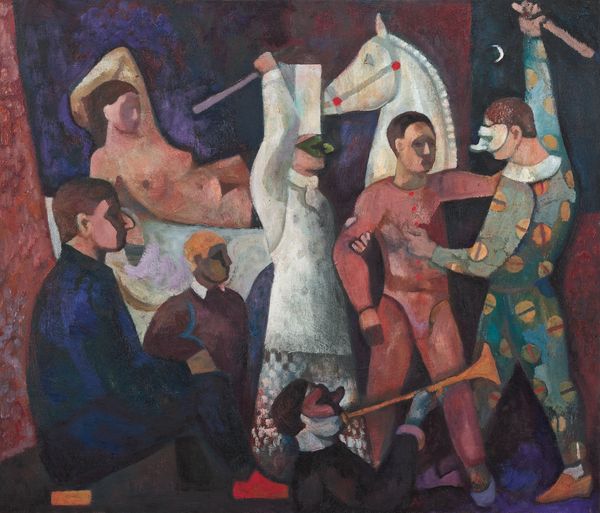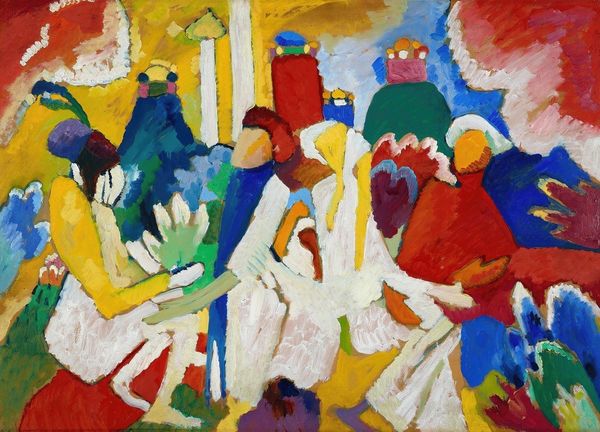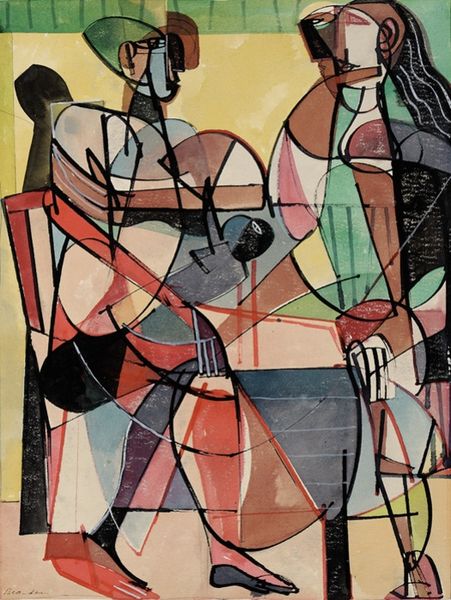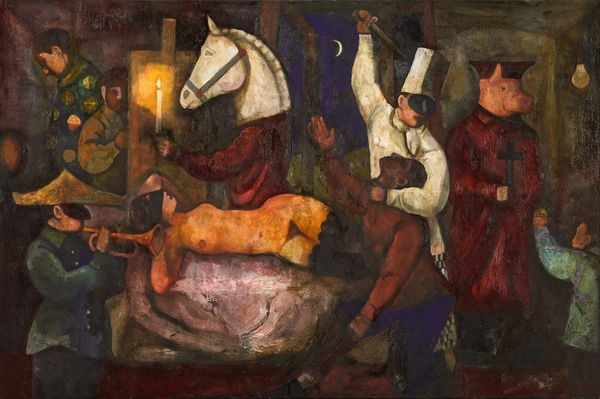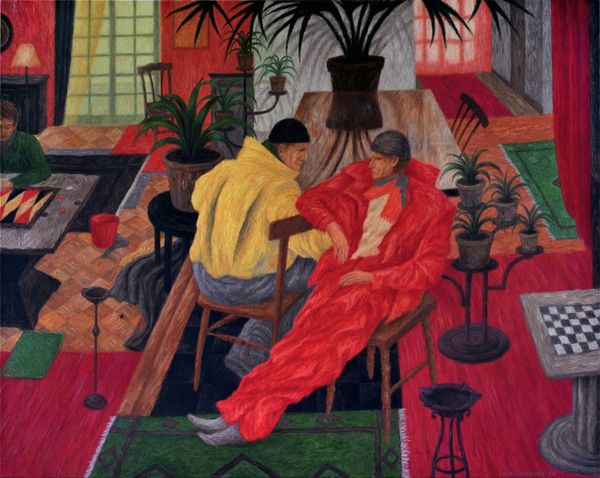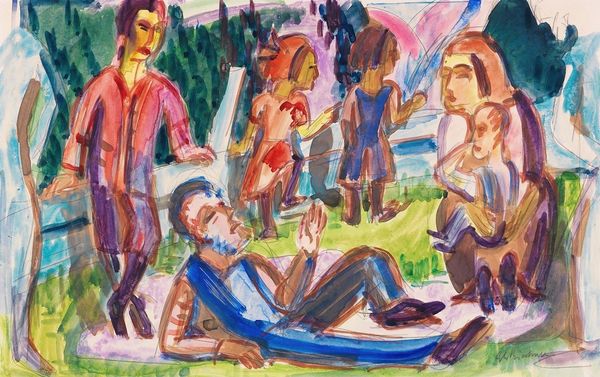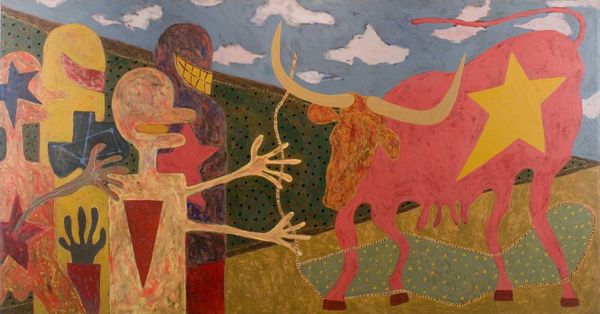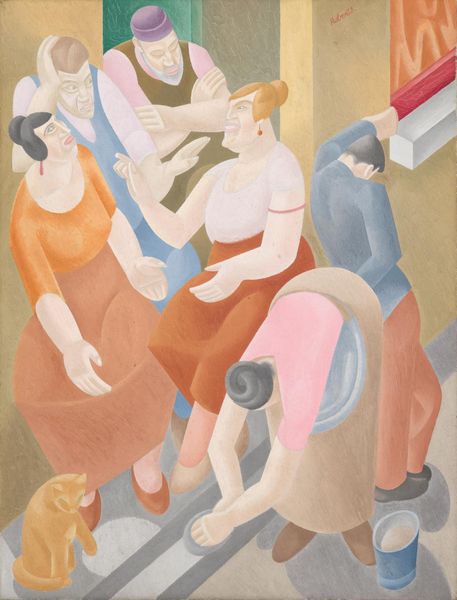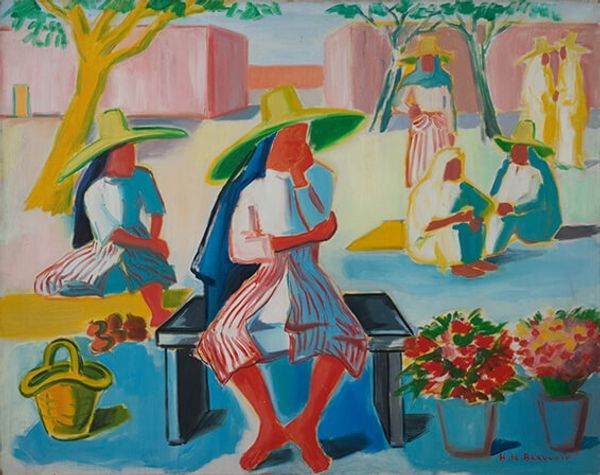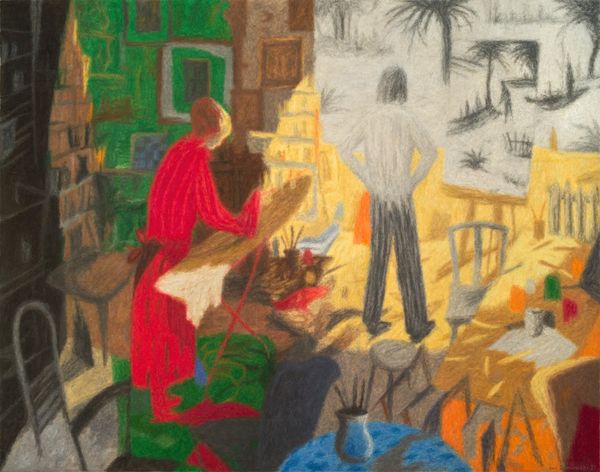
painting, oil-paint, acrylic-paint
#
abstract painting
#
painting
#
oil-paint
#
landscape
#
acrylic-paint
#
figuration
#
oil painting
#
acrylic on canvas
#
painting painterly
#
nude
#
modernism
Dimensions: 244 x 122 cm
Copyright: Reproduction by permission of the artist
Editor: This is William Balthazar Rose’s, *Female Cooks in the Forest*, created in 2020 using oil and acrylic paint. It's such a surreal composition—it feels both dreamlike and unsettling. How do you interpret this work? Curator: I see a commentary on the gaze, and perhaps the fetishization of the female form within a landscape that’s far from idyllic. Consider how the women are positioned: some are cooking, implied by the title, yet also arranged as objects within the space. What’s interesting is the artist seemingly uses the space and positioning to highlight their place within that dynamic. Editor: So you're saying it's not just a depiction of women, but a statement about their objectification? Curator: Precisely. Notice the prominent white horse’s head; in certain historical contexts, white horses have symbolized purity or idealized beauty. How does that contrast with the depiction of the nude figure? And the masked figure? It suggests a layering of identities, a tension between representation and reality. Who do you think it serves? Editor: That makes me think about the male figures who seem to be watching. The title really throws me off still. It is so specific, but it's clearly doing something else than describing female cooks in nature. The women appear as exhibits rather than actors. Curator: Exactly. What do you make of the prominent architecture appearing throughout the image? Is the “forest” being framed as an institution? Editor: I didn't consider the forest as an institution. The space and staging definitely seems performative, perhaps the landscape as a theater? That's a pretty jarring reconsideration of how I viewed landscapes prior. Curator: It invites us to question power structures, the way we frame identity, and the stories we tell ourselves about gender, race, and art history. Ultimately it shows art is never made in a vacuum.
Comments
No comments
Be the first to comment and join the conversation on the ultimate creative platform.

